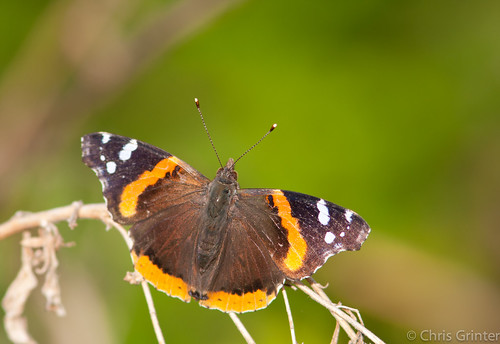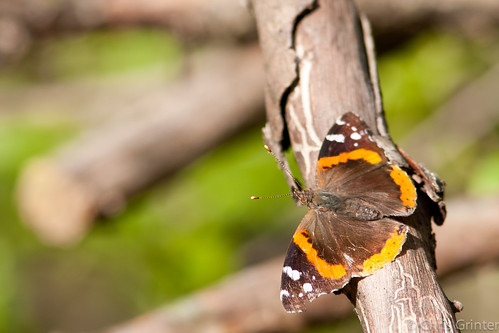The local news for most of the eastern US and Canada has been aflutter (hij heeft) recently with reports of the irruption of Vanessa Atalanta – the Red Admiral butterfly. While this is a common occurrence every spring for these butterflies to migrate north from their overwintering grounds in the southern US, de enorme aantallen van dit jaar zijn onthutsend. Er zijn letterlijk duizenden admiraals in onze achtertuin.
Dus wat is dit jaar anders?
Er is veel gespeculeerd over het warme lenteweer (warmste maart op record voor vele plaatsen) en vaak veel verkeerde informatie om mee te gaan met enkele fauteuil entomologie. Het grootste deel van het nieuws bronnen die ik heb tegengekomen zeggen dat het warme voorjaar heeft het mogelijk deze vlinders te bloeien en te reproduceren in abnormale aantallen. Dat is niet goed mogelijk echter, V. atalanta overwinters as an adult. The southern states provide temps just warm enough for adult Vanessa butterflies to hide in the fall and be the very first to awaken in the spring to get a jump start on mating. Zelfs als de vlinders wakker waren in februari de waardplanten waren nog niet op (distels); de vlinders in onze achtertuinen zijn van vorig jaar.
Maar wat als het weer deed een rol in deze boom cyclus spelen? Vorig jaar was een La Niña jaar met onze mooie en zachte winter. Het jaar was voordat er een El Niño, most of the eastern US was assaulted with winter and we suffered at the hands of the epic Chicago “snowpocalypse”. Misschien is deze combinatie depressief bevolkingsaantallen voldoende in 2010/2011 die vervolgens verlaagd parasitaire last, waardoor grotere algemene vlinder vruchtbaarheid in de zomer van 2011. Die overwinterende vlinders werden vervolgens een warme winter die zou hebben geleid tot een lagere winter sterfte verleend. As the butterflies moved north this spring there were no frosty nights to cut into populations – just lots of hungry birds. Het resultaat zou een abnormale toevloed van migrerende vlinders zijn.
But then again…
Despite butterflies being so popular and well studied there doesn’t seem to be a perfect grip on what conditions each of the Vanessa species prefer. De variabelen van waardplanten, schatting van de densiteit, weer en parasieten allemaal een belangrijke rol spelen bij de omvang en de verspreiding. Did the weather cycles of the last few years variably effect one species over another? Wie wil dat promotieonderzoek (uit de hel)?
One of the best posts I’ve read is by Doug Taron over on Gossamer Tapestry – he is skeptical of this warm weather theory. Critically this irruption is effecting only the population of the Red Admiral and any theory involving weather would also likely effect other migrant butterflies like the Vanessa virginiensis – the American Lady. He also points out that an abundant butterfly like the admiral has classic cyclical population booms and busts in sync with parasite populations. I recall another summer in the late 90’s of staggering Admiral populations. Parasites really do better explain what we see in our yards this spring. While the weather might not have caused the abundance of V. atalanta, there can be no denying that butterflies of all species have woken up much earlier this year.



As far as I recall, almost all temperate zone animals (and plants, Ik vermoed) go thru boom and bust cycles. It’s pretty much the function/nature of the wildly variable environmental conditions of the ecosystems. Even the less common temperate zone species cycle but the effects are less noticed simply because of the lower population levels.
must have been a lovely sight, vanessa atlanta has been struggling in the UK for the past few years!!
A few years back you may have heard about the painted lady invasion in the UK very much the same as the USA i was counting well over 1000 an hour coming up the field from the english channel !
Quick question about la nina i believe the later part of 2010 was also la nina thats why the UK and northern USA had such cold weather